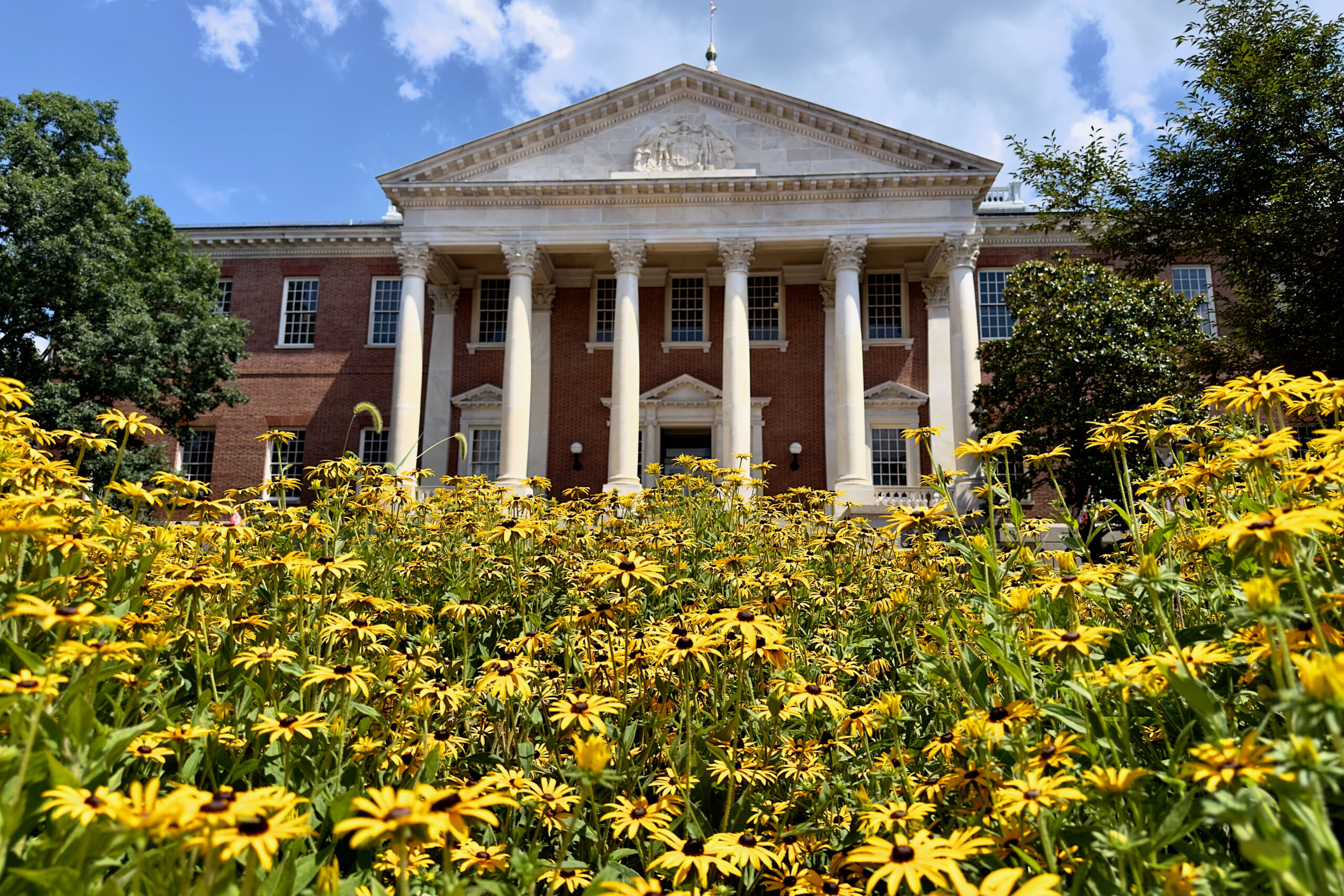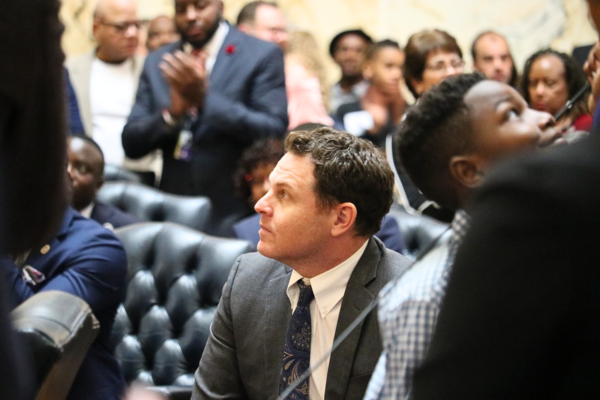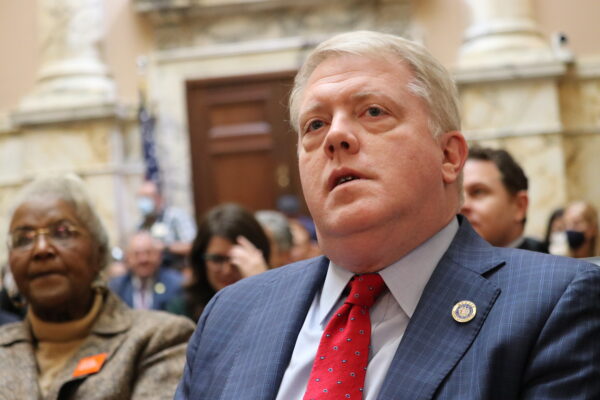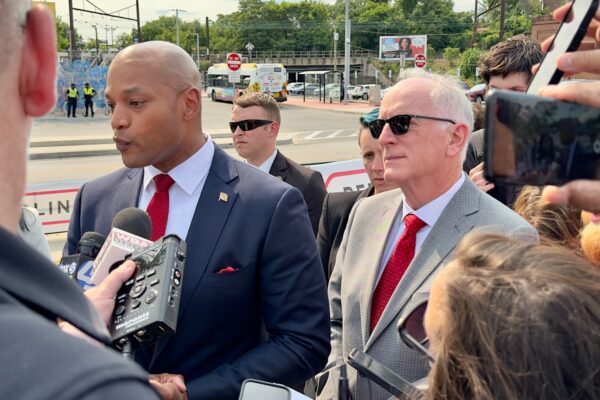Budget deficits loom in the wake of the 2023 session

The most recent 90-day legislative session swung Maryland’s fiscal picture from hundreds of millions in surplus to increasing projected deficits over the coming four years, according to the Department of Legislative Services.
Deficits projected in the report for 2028 exceed $1 billion and approach levels not seen since The Great Recession. The new projections pose a test to the ability of Gov. Wes Moore (D) to deliver on a number of priorities and promises.
Lawmakers said they were not surprised by the numbers but acknowledged challenges lie ahead.

Del. Ben Barnes (D-Prince George’s and Anne Arundel) watches proceedings in the House of Delegates on the first day of the 2023 General Assembly session. Barnes is chair of the House Appropriations Committee. Photo by Danielle E. Gaines.
“We’ve made some real commitments, and they are robust,” said House Appropriations Chair Ben Barnes (D-Anne Arundel and Prince George’s), noting new investments in education reform and transit. “…We need to fulfill these commitments and to do that we certainly are going to need to take a hard look at more revenues.”
In January, Moore and lawmakers came to Annapolis with a historic $5.5 billion budget reserve. Much of that was the result of discontinued federal pandemic spending.
When Moore introduced his budget in January, legislative analysts projected hundreds of millions in structural surpluses — $232 million and $263 million in fiscal years 2025 and 2026 respectively.
Following the 2023 session, analysts now say those surpluses have evaporated, according to a new report.
It is now projected that the fiscal 2025 budget will start with a $418 million deficit. That represents a $650 million decrease compared to the January estimate. In the next year, the deficit rises to $572 million. This marks a significant difference of $835 million compared to the January projection.
The budget outlook for fiscal 2028, at the start of a new term, “deteriorates substantially,” according to the report. Analysts attribute the sharp decline to the costs of major education reforms.
The projected shortfall that year is more than $1.8 billion “due to the ongoing K-12 education enhancements outpacing the availability of special funds in the Blueprint fund.”
During that time, revenues grow by more than 3%. Projected expenditures outstrip those, growing by 5%.
Analysts highlighted four bills passed this year that have a significant impact on reducing revenues.
Included in that is a bill backed by Moore that enhances existing tax credits for some military retirees. The bill signed by Moore reduces revenue by $11-$13 million per year over five years.
Moore also backed a permanent extension of the state’s Earned Income Tax Credit at a cost of about $897 million over five years.
Another bill, the Family and Medical Leave Insurance Program will cost $22 million in 2025 and $36-$39 million in fiscal 2026-2028, according to analysts.
Undoing the earned income tax credit and the tax cut for retired veterans could be unpalatable, if not politically difficult.
The costs of the landmark Blueprint for Education funding plan have a significant impact in later years.
“If we’re going to keep our commitment to the children in this state, we’re going to have to be creative and look at all options,” said Barnes.
A dedicated fund to pay for the Blueprint plan will have nearly $2.9 billion in it by the end of the current fiscal year. That fund plus annual revenues of about $1.4 billion earmarked for the plan to cover the costs from fiscal 2025-2027.
But analysts warn that the fund will be “exhausted” at the end of fiscal 2027. That results “in substantial K-12 costs shifting to the general fund in fiscal 2028,” according to the report.
Future projections such as those contained in a recent Department of Legislative Services report take into account projected spending and revenues.

“I think the question is about a degree of worry,” said House Minority Leader Del. Jason C. Buckel (R-Allegany), a member of the House Ways and Means Committee and the Joint Committee on Spending Affordability. “You can’t sit there and say that these things are mathematical certitudes or that we know, for example, that in FY 2026 we’re going to spend down much of the Rainy Day Fund and still have these huge deficits. We don’t know that because it’s very difficult for everyone to predict tax revenues.”
Buckel said lawmakers should consider paring back the cost of the Blueprint education plan.
“The problem is that we’re just spending so much on it,” he said. “I think that we’re going to have to be realistic with each other and realistic with our constituents. We can’t afford [the Blueprint plan]. We can’t afford the pie-in-the-sky estimates of going and increasing everybody’s salary that works at every school from Oakland to Ocean City.”
Other factors could change the outlook before January.
The Board of Revenue Estimates updates revenue projections in September.
Economists are also watching for signs of an impending recession. A July report by The Conference Board, a nonprofit think tank, projects a U.S. recession in the coming months.
The new projections present a challenge for Moore. The charismatic but untested politician made big promises and expounded the success of his early efforts.
Those successes could impinge on the balance of his first term.
A spokesperson for the governor declined to comment for this story.
Moore desires to make Maryland a model for eliminating childhood poverty.
The governor also wants to wipe out 10,000 state employee vacancies. Before entering office in January, he vowed to hire 5,000 in his first year in office.
He also promised to resurrect the east-west Red Line transportation project in Baltimore. Former Gov. Larry Hogan (R) called the multi-billion project a boondoggle and killed it in 2015.
“Ending childhood poverty is a wonderful goal. How much money it costs? I don’t know,” said Buckel. “Some of it is certainly money. Some of it is probably more programmatic and maybe redirecting sums that are already out there to objectives that might meet the goal better, rather than new. Maybe there’s some wasteful spending or some spending that doesn’t really advance that objective. It’s a great goal to build the Red Line. Absent a massive infusion of federal funds, that I don’t think is highly likely.”
The state’s Transportation Trust Fund is already overburdened. Analysts, in their report, note a 10-year shortfall of nearly $4 billion in the fund.
In recent years, the operating budget has absorbed the costs of some projects, including the Purple Line.

Gov. Wes Moore (D) and Maryland Transportation Secretary Paul Wiedefeld speak to reporters after announcing the relaunch of the Red Line transit project. Photo by Bryan P. Sears
Moore last month announced he was moving forward with the Red Line transit project. It is unclear what form the east-west Baltimore project will take or its cost. Some of it would likely come from the Transportation Trust Fund.
The governor has also called for decoupling the gas tax from an automatic inflationary increase. The gas tax increased to 47 cents on July 1. The tax has increased 30% over the last two years driven by record inflation and surging fuel prices.
Money raised by the surcharge helps fund the state Transportation Trust Fund.
Moore, speaking to Maryland Matters earlier this month, said the current gas tax increases are “not sustainable, and it’s harming too many working class families and that we cannot have a Transportation Trust Fund that is that is going to exclusively be funded on tax increases and fees that have a disproportionate impact on working class families. It’s not fair.”
But the governor said it would be up to the legislature to lead on the issue.
The General Assembly passed legislation to begin looking at alternatives for funding the trust fund. The commission has yet to be appointed. An interim report is expected before the 2024 session.
Buckel said he hopes lawmakers will look to curb spending and improve the economy in smaller and rural counties. But he braces for the possibility that Democrats will seek tax increases.
“I think that until I hear from their lips, we’re not going to consider tax increases to pay for these things. I think it’s still a valid concern,” he said.




 Creative Commons Attribution
Creative Commons Attribution